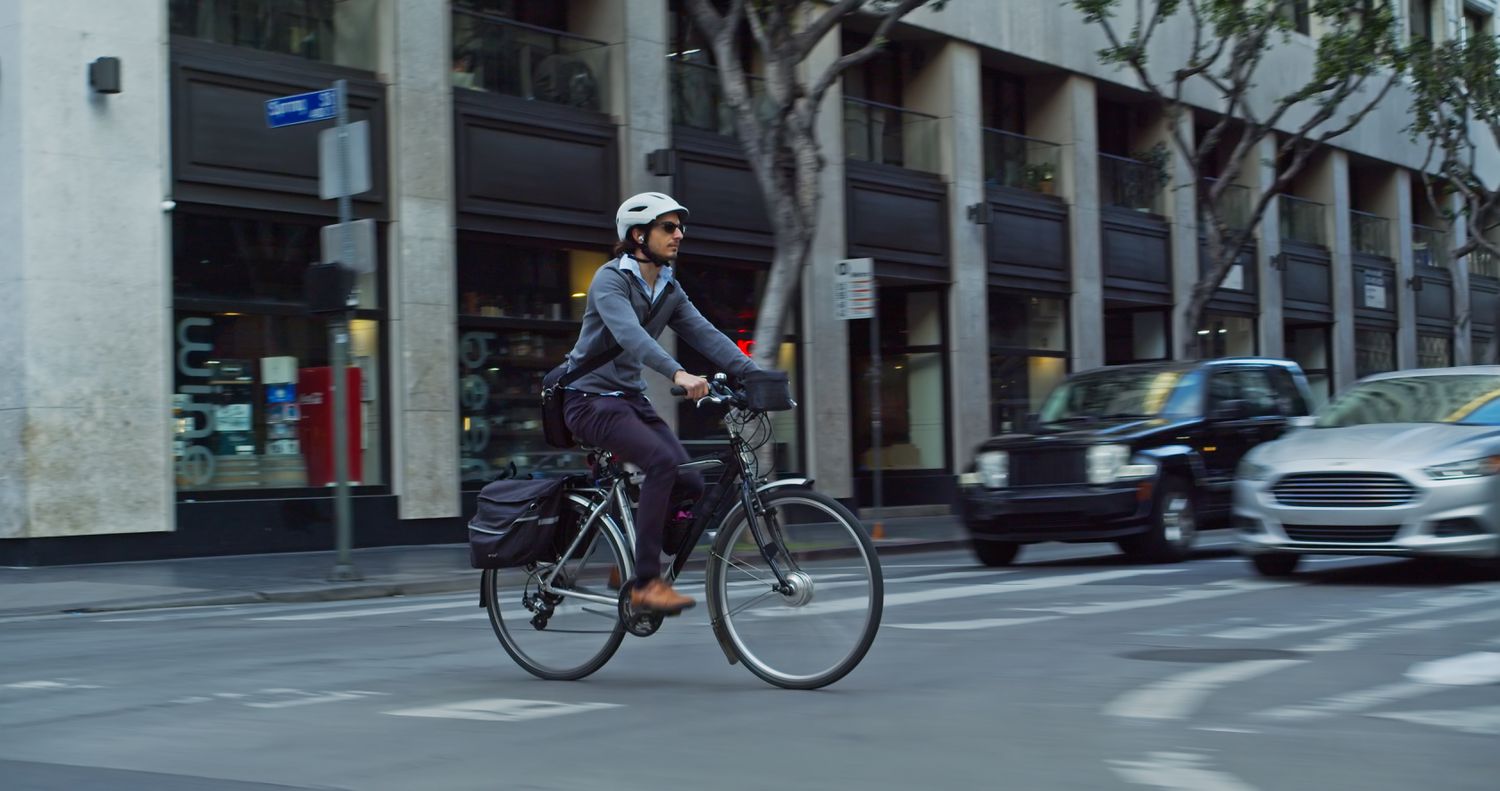Growing Injuries Linked to E-Bikes and E-Scooters on the Rise—Here's the Reason

The number of injuries and hospitalizations related to electric bikes and scooters has drastically increased in the United States, according to a recent study.
The study published in JAMA Network Open found that e-bike injuries nearly doubled every year from 2017 to 2022, going from 751 to 23,493. E-scooter injuries increased by 45% over the same period, climbing from 8,566 in 2017 to 56,847 in 2022.
“These findings are important as they highlight the need for targeted safety measures and further research to understand and mitigate the risks associated with the increasing use of e-vehicles,” Kevin D. Li, BS, co-first author and a 2025 dual candidate pursuing medical and master’s degrees at the University of California San Francisco, told Health in an email.
The use of small, lightweight vehicles like e-bikes and e-scooters, also known as the “micro-mobility movement,” has gained popularity in recent years due to the convenience, cost-effectiveness, and environmental benefits of these vehicles, Li said.
At least half a billion trips have been taken on them since 2010, and shared e-bike trips have nearly doubled from 9.5 million in 2018 to 17 million in 2021, according to the National Association of City Transportation Officials.
Here’s why injuries from e-bikes and e-scooters may be on the rise and what experts say you can do to stay safe.
Li and his colleagues analyzed emergency department data from the Consumer Product Safety Commission’s National Electronic Injury Surveillance system. They looked at factors like a rider’s age, type of injury, whether or not they wore a helmet, and if they were under the influence.
In addition to finding that injuries from e-bikes and e-scooters soared each year from 2017 to 2022, the researchers also found that these injuries often involved riskier behaviors, such as alcohol use and lower rates of helmet use, than injuries related to riding in conventional vehicles.
The study also revealed that e-scooter riders were more likely to suffer internal injuries, while regular scooter riders were more prone to injuries affecting their arms, wrists, and hands. The risk of other types of injuries, like those involving the head, nerves, and bones, was similar for both e-scooter and regular scooter riders.
Injured electric vehicle riders were generally older than those on regular bikes and scooters, the researchers noted. The median age for injured e-bike riders was 39, compared to 30 for conventional bike riders. For e-scooter riders, the median age was 30; for regular scooter riders, it was 11.
Additionally, after controlling for age, the study found that injured Black riders had a 24% lower chance of being admitted to the hospital for their injuries “for reasons that are currently unclear,” Li said.
Experts attribute the dramatic rise in e-bike and e-scooter injuries to a few factors. For one, these vehicles are everywhere, making it exceedingly easy for people to hop on and go. Yet there is not enough guidance on how to ride responsibly, Jamehdor said.
“People can just use their phones and click a couple of buttons, and they’re off,” Jamehdor said. “But there’s no real training at all or instructions on how to use it and there’s no safety apparatus that comes with it like helmets or shin guards. So, there’s so much capacity for people to get injured.”
Jamehdor said another potential reason why electric vehicle injuries have nearly doubled in the last few years is that these vehicles can go pretty fast—up to 30 miles an hour—which means that when accidents happen, they can be quite serious.
“It’s essentially like sitting on a motorcycle. And so when you do fall, the skin road rashes that people get are fairly deep,” Jamehdor said. “The head injuries people get are very bad and can cause bleeding intracranially. So we see all sorts of injuries as simple as a little skin tear to being comatose on a ventilator.”
Li added that the ability of e-vehicles to reach higher speeds than regular bikes and scooters is particularly concerning, especially since there is a lack of protective infrastructure designed for these types of vehicles.
“Our current transportation systems are not well-equipped to handle these new forms of micromobility, which contributes to the higher injury rates,” Li said.
Other factors like bumpy roads, potholes, and pedestrian and road traffic can also lead to accidents, Jamehdor said.
Furthermore, the researchers found that helmet use was less common among e-vehicle riders, which may contribute to the increased injury rates. And higher rates of alcohol use among injured e-bike and e-scooter users suggest that risky behaviors may also be a contributing factor, Li said.
“However, it is difficult to draw direct conclusions about how specific behaviors affect injury numbers without more granular data,” he added.
It’s important to note that the researchers are not advocating against e-vehicles but are instead trying to highlight that “safety must always be a priority,” Li said.
To stay safe while riding an e-bike or e-scooter, start by educating yourself about the vehicle, Jamehdor suggested. For example, observe how others use them, watch instructional videos online, and read up on their features, such as speed limits and braking systems.
If you’re new to riding, Jamehdor recommended practicing in a safe, open area—preferably with someone experienced who can guide you. In addition, you should always wear a helmet and appropriate safety gear, just as you would for other activities like snowboarding.
Li also suggested using lights, wearing reflective gear, and always following traffic regulations.
“Public education campaigns and stricter enforcement of safety regulations can also help protect riders, particularly in frequent-use areas,” Li said. “For non-riders, it’s important to understand the growing presence of these vehicles on the roads and to support infrastructure and policies that enhance safety for everyone, including pedestrians and drivers.”




